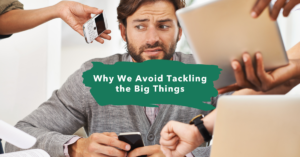I can still viscerally recall my reaction to one constant mantra of each and every course as I pursued (and finally received) my MBA from Krannert at Purdue. If there was one meta message it was this: businesses exist to “create shareholder value”. It was all about dollars dropping to the bottom line. A singular focus on profitability. Nothing more. Nothing less.
I wanted (but never did) to jump up and share a different opinion. I wanted my teachers and classmates to understand that the organizations I knew and worked with did much more – they provided jobs and economic stability to the community and offered others a better life as a result. The businesses I looked up to provided goods and services that mattered, that made a difference to their customers. The ones that I had been a part of mostly spent energy, effort, time and resources on creating a community (employees, customers and suppliers) that worked together to create something bigger than any one person or group could. The businesses that I admired assumed a vital role in the community and considered how to give back in significant ways. I wanted to shout that while financial returns were important – to consider profit the ONLY purview of an organization was too narrow, too limited, too mercenary. And as we are painfully finding, profit-only may not be the best measure in the long term about sustainability – of the company, the community, the world.
But I never did. So today, I will. And I am joined by others who are advocating that businesses need to think well beyond the holy grail of the P&L bottom line. I am encouraged that many companies, big and small, publicly traded and privately held, have recognized that there are important STAKEHOLDERS to serve in addition to STOCKHOLDERS.
One way that companies across the globe are measuring results this way is using a triple bottom line (3BL) in which they account for People (social), Profits (economic) and Planet (environmental). The concept was articulated by Andy Savitz in his book The Triple Bottom Line. The proposition is that these three measures in total are a much better measure of sustainability than the more traditional profit only measures.
So what is the triple bottom line? The profit bottom line is the one we all know. The people (or social) bottom line looks at the short- and long-term social impacts – to employees, suppliers, and the community, which can be quite global. The planet (or environmental) bottom line looks at impact to nature. So while what is measured may vary, metrics might include:
| People (Social) | Planet (Environment) |
|
|
3BL has been adopted by companies across the globe, but has faced opposition and not had widespread uptake. Those opposing it argue that the measures are varied, imprecise, and at best are difficult to measure, let alone related directly to sustainability. And it is quite accurate that 3BL accounting is not yet to GAAP level yet, leaving individual companies wrestling with what to measure and how to quantify concepts that we’ve never before defined, tracked or reported.
Yes, 3BL is admittedly difficult to measure. But in reality, so is profit. A bit funny, this fixation with “hard metrics” given that anyone who has managed a P&L center in a publically traded organization knows how much the financial bottom line is gamed. Need to show more profit this quarter? Ship product the day before the quarter closes, have a blowout sale to move inventory, pull orders up, defer spending – all legit, all short-term focused, all just a few of the too many to mention tricks of the trade.
So challenging it may be – but it would appear to me to be a challenge worthy of tackling. In my mind, the mere act of wrestling with the questions of social and ecological impact will shift focus and then actions. I would advocate that imperfect measures are better than none, as what gets measured matters. And what matters more than the sustainability of your organization? The people and social systems it impacts? The planet? Worthwhile effort I say, even if initial efforts are imperfect.
What do you think?
And if you’d like to read more, here are some great sources:
Triple Bottom Line: What is it and How Does it Work from the IBR – Timothy H. Slaper, PhD and Tanya J. Hall,
The Economist – blog posting
A Critique of 3BL from Harvard (and rebuttal)
Cannibals with Forks by John Elkington, thought leader in sustainability




